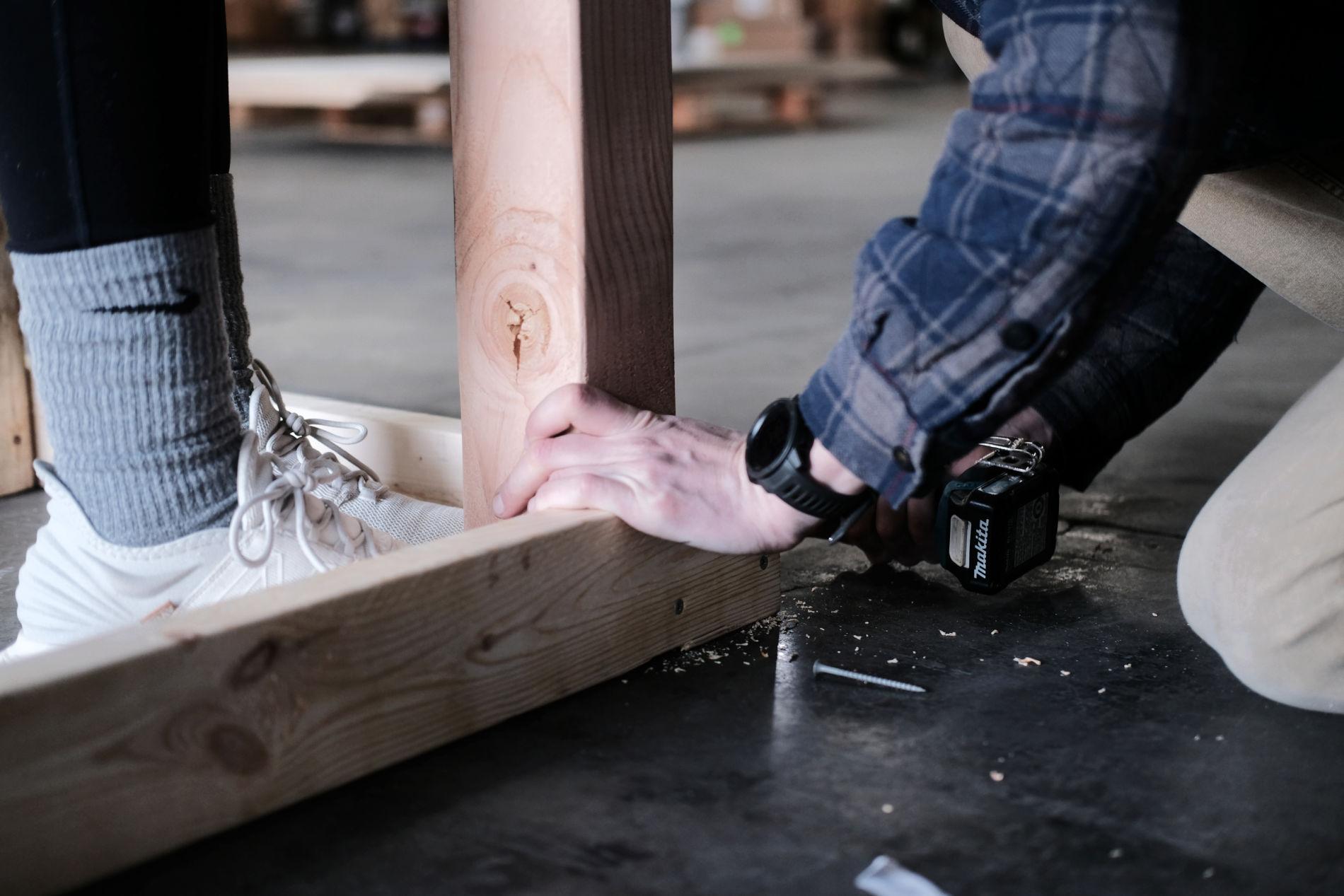Warehouse
5 Tips For Moving To Your First Warehouse, Straight From a Seller
- Written by Catherine Lux

We recently visited one of our sellers, Ben Chappell, who is the co-founder of eChapps, a family-owned ecommerce retailer of toys and games.
We wanted to chat with Ben and his family about their recent move to their very first warehouse, and get their first-hand advice on the top things you should think about when growing your business and leasing your first warehouse.
You see, eChapps has been running their $8.5million a year business from their family home and 23 storage units for the past ten years. Not only did they recently move from multiple locations to one warehouse, but they uprooted their whole family and moved to an entirely different state - South Carolina - to try and improve their quality of life.
Selling through Amazon FBA as well as seller-fulfilled, eBay, and their Shopify store, eChapps was one of Veeqo's very first sign-ups in the United States when we launched at Amazon Accelerate in 2022, and it’s been a match made in multichannel ecommerce heaven ever since.
In December 2023 they shipped a total of 150,000 orders, with 93% being FBA and the other 7% being seller-fulfilled, so they needed a powerful piece of inventory and shipping software to help them achieve all those orders whilst being in the very middle of a major multi-location warehouse move.
Further reading: How to Choose the Location of Your Warehouse
Here are Ben’s top five tips for moving into your first warehouse (including a bonus tip at the end!)...
Table of Contents
Think about what you really need from a warehouse
Don’t be afraid to be nosy when viewing warehouses
Don’t assume contractors will do things that aren’t written down
Put extra cash aside for unexpected costs
Choose a commercial real estate broker you trust
Bonus tip!
1. Think about what you really need from a warehouse
Ben’s number one tip is to figure out what you want and what you're looking for in your warehouse space.
He told us, “whether it be how many pallets you need, if you think you're gonna need to build up or just build all floor loaded, how much office space and how much wiggle room outside of storage do you need for actually getting your your production done?”
A really interesting piece of advice he told us, was to make sure you consider your calculations and make sure to calculate everything! He said this was one of their biggest mistakes...
“A big thing that we did not calculate in which is, you know, basic things like aisles, working areas, receiving zones, places to put pallets that are ready to be moved into storage. That's all space that you need to make sure to calculate in when you're looking for how much square footage you want.“
He went on to tell us that this mistake meant their search for a 10,000sqft warehouse had been pointless and a waste of their time, and they actually needed to look for somewhere bigger, especially with their future growth plans.
They ended up choosing a 20,000sqft space - double the size of their original plan!
Further reading: Leasing Warehouse Space vs Buying a Warehouse
2. Don’t be afraid to be nosy when viewing warehouses
Another great point Ben made was that he wished he had been more nosy when viewing warehouses.
He says, “don't be afraid to be nosy when checking out warehouses. I did feel very invasive, but one thing I wish I did was take more measurements while I was there checking out warehouses. Even though there's gonna be people working most of the time, really just get in there. Look behind pallets, look behind racks, see what holes are there!"
He pointed out that this isn’t just for fun, there’s actually a really important reason behind doing this: “When we first got this warehouse, we were making a list of improvements that needed to be done. And so when we were writing the contract in the lease, that's all things that I wish I would have known more of so I could have gotten a bigger tenant improvement budget - so that's less money out of our pockets and more out of the landlords.”
3. Don’t assume contractors will do things that aren’t written down
His third tip for moving to a new warehouse is, “Make sure to ask, ask and ask again about contractors. Don't assume that they're gonna do something that is not written down.”
Ben noted that one thing they did was have all of the warehouse lighting changed to LEDs to help their business be more environmentally sustainable and more cost-efficient.
He said even though he asked them to change all of the lights to LEDs, they actually ended up with a couple of sections that weren’t changed to LEDs, and it turned out that they weren't even in the budget.
He said that because it wasn’t written down, “if we wanted them to be LEDs, that comes out of our pockets now, rather than just the landlord's tenant improvement budget. So make sure to ask lots of questions, clarify everything. Don't assume they want to do it the same way you wanna do it.”
Further reading: How to Design Your Warehouse Layout for Maximum Efficiency

4. Put extra cash aside for unexpected costs
A key piece of advice from Ben is to have extra cash set aside, “It's always gonna cost more than you think. There's always gonna be things that pop up that you're not expecting. Equipment is gonna cost more. All the little inspectors and contractors are gonna cost way more than you think, especially moving from residential to commercial. The invoices have doubled and tripled for something that would be like half the cost [previously].”
This was something another of our sellers also noted recently, saying that as soon as you’re a commercial business instead of operating from a residential property, the invoices cost a considerable amount more than they previously did. It's something to factor in right from the start.
5. Choose a commercial real estate broker you trust
Finding a commercial real estate broker you trust to help you make such a major business decision, is a difficult but worthwhile process to go through.
Ben says you need to pick one that “you're comfortable asking lots of questions to.”
He went on to say “My guy, he led us through this process from start to finish from having zero experience with renting out commercial and industrial places. He was able to guide us along the right path and led us to ask questions to building owners and landlords that we would have never have thought to ask.”
It’s really important to find a real estate broker who you not only trust, but also one that really knows the local market in the area where you’re looking for your new warehouse.
Bonus Tip: Use Veeqo!
Ben also offered a bonus tip - use Veeqo! This one is obvious to those of us who live and breathe the Veeqo software every day, but believe it or not, we didn’t prompt him to offer us this extra tip and it was just him telling us the difference it’s made to the eChapps business.
He noted that, “one way Veeqo has helped us during this move is we're able to keep selling our self-fulfilled items while marking other items in transition to this warehouse. So instead of having to zero out all our inventory and then re-upload it, we just have all our products in transition and the ones that are still in Virginia, we're able to still keep inventory and keep selling through. And then the second we're all set up here, we can go ahead and finish that transition and everything will be live and ready to sell. And so that's just tons of time straight up saved.”
When he visited their old location in Virginia, he asked one of their employees to figure out a way to put them in vacation mode or try and keep certain SKUs live.
Their employee took the initiative and ended up messaging our customer service team here at Veeqo instead of trying to figure out a lot on herself.
Ben told us that “she came back to me, she's like, 'The Veeqo customer support team is so great, they saved me a lot of time!' So she just ended up making a little list, moving everything to in-transit except for the ones that we're keeping there and it was really nice and simple.“
Having a solid inventory and warehouse management software like Veeqo means you can automate part of the warehouse management process and build a smarter fulfillment process. It's more efficient than using an excel spreadsheet, and also offers powerful tools such as digital picking and forecasting.
Further reading: How to Set-up Your Warehouse Inventory
Ben also mentioned how much he loves that Veeqo is saving them so much money - their previous software was costing $1800-$2000 per month, and instead Veeqo is completely free! He made the point of saying, "That's just money straight back into our pocket."
Sign-up to Veeqo now to access our powerful suite of free shipping and inventory management software - it’s perfect for businesses settled in their location, and even during warehouse move.






